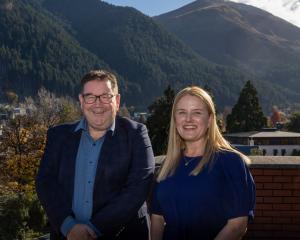After nearly eight years, a retrospective resource consent could finally be granted for riprap flood protection around the Queenstown Gardens peninsula.
Rip-rap is the combination of material overlaid by shingle and rocks laid by the Queenstown Lakes District Council around the peninsula after the 1999 flood.
The council also planted crack willows but is considering replanting with a species which will not break off and potentially clog the waterways running from the lake, QLDC parks manager Gordon Bailey said.
The council has been trying to get retrospective resource consent from the Otago Regional Council for the work since 2000.
‘‘Don't ask me why it has taken this long but we are here now,'' Mr Bailey said.
However the Queenstown Gardens Guardians are concerned the works have not been completed and previous resource conditions have not been adhered to.
In their submission to the Otago Regional Council commissioners - Stephen Woodhead, Duncan Butcher and Gretchen Robertson - the guardians said QLDC had not been abiding by a previous consent condition to monitor the rip-rap every six months or after any significant water rise.
Some trees are now dying after trucks transporting rocks to the peninsula ran over their roots. These need to be replaced.
The guardians also asked that a small section of beach not covered in the rip-rap be left as there is no other beach remaining on the peninsula.
Mr Bailey said he was happy with the consent conditions as outlined.
Cr Butcher suggested a management plan be given more consideration as it would get concerned locals more involved.
‘‘It seems there has been a lot of talk about a management plan since 1999 but it has never been set up,'' Cr Butcher said.
Cr Robertson suggested QLDC try to make more of the lake accessible from the peninsula by rearranging some rocks into more usable ‘‘stepping stones''. The hearing adjourned and the commissioners will make a decision soon.












